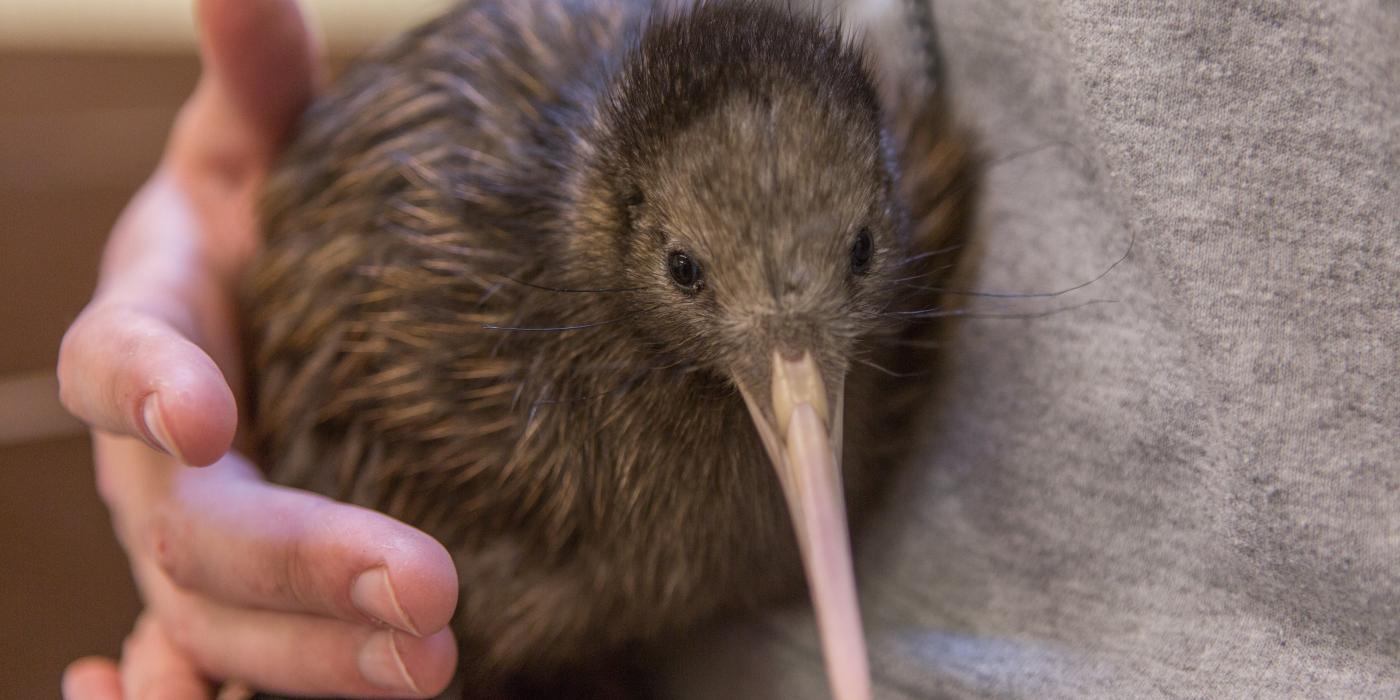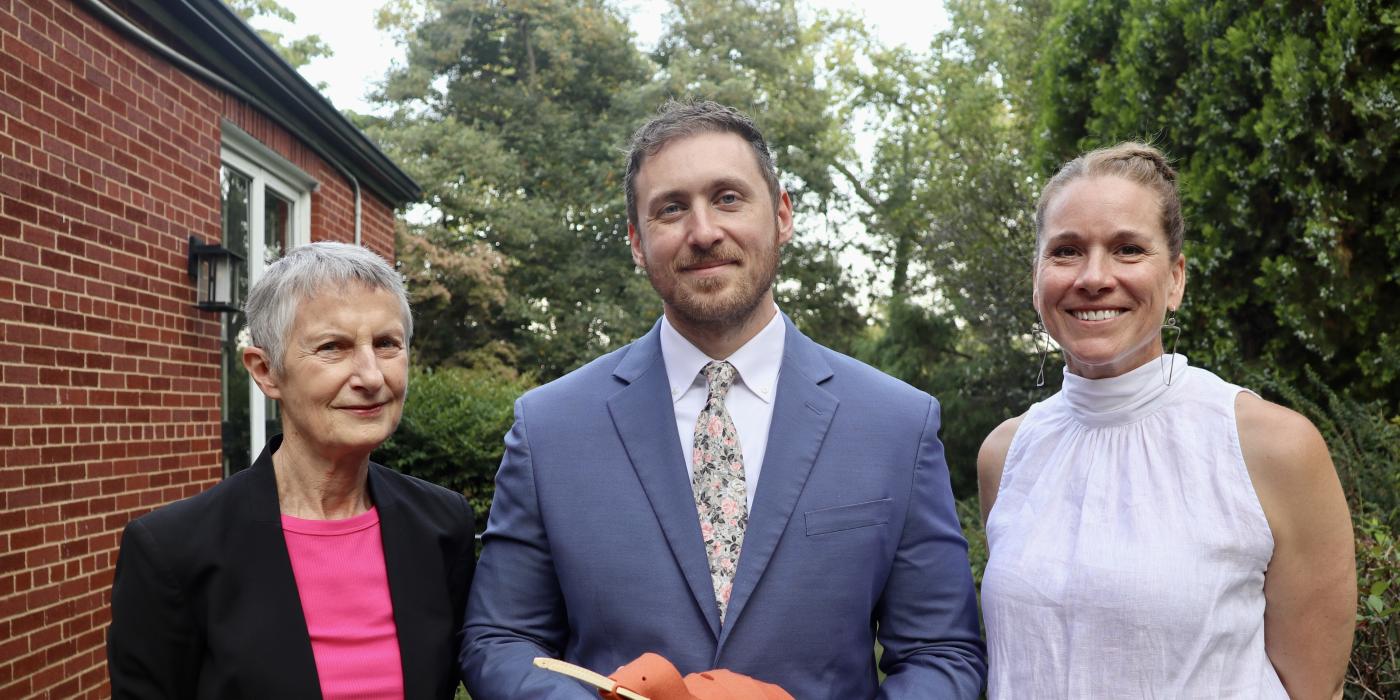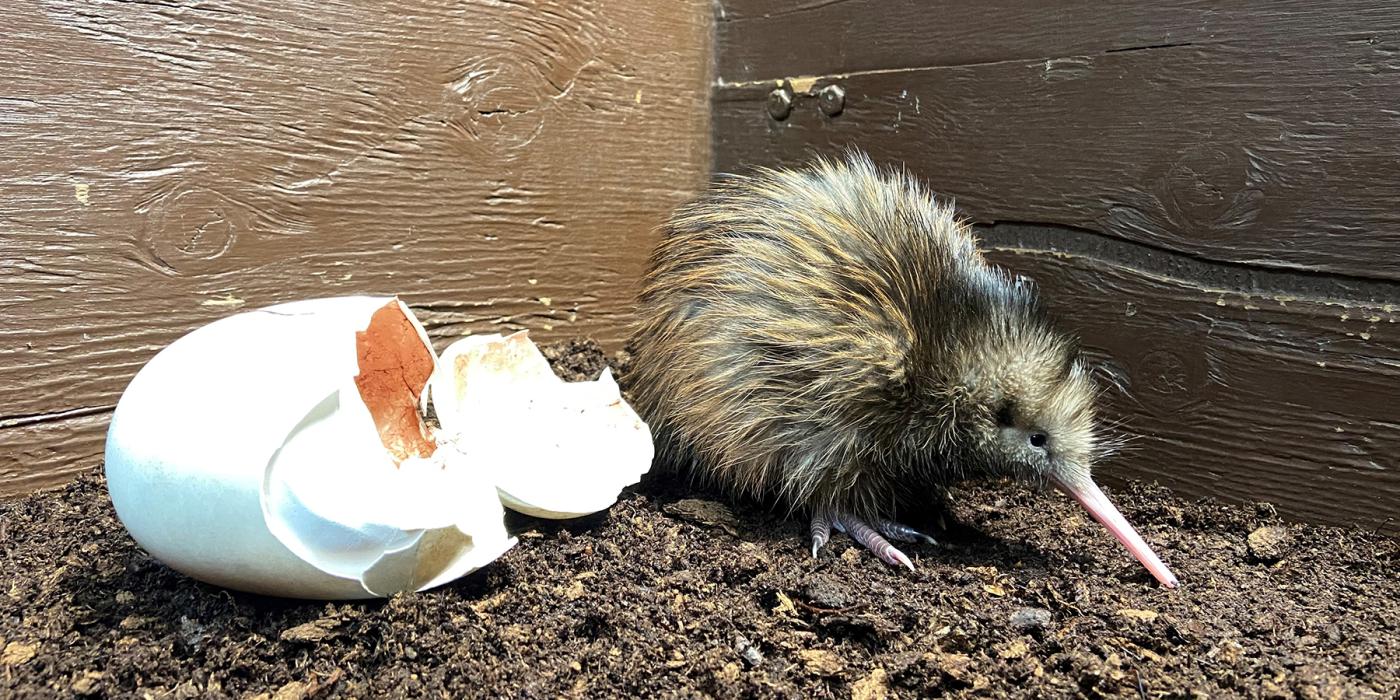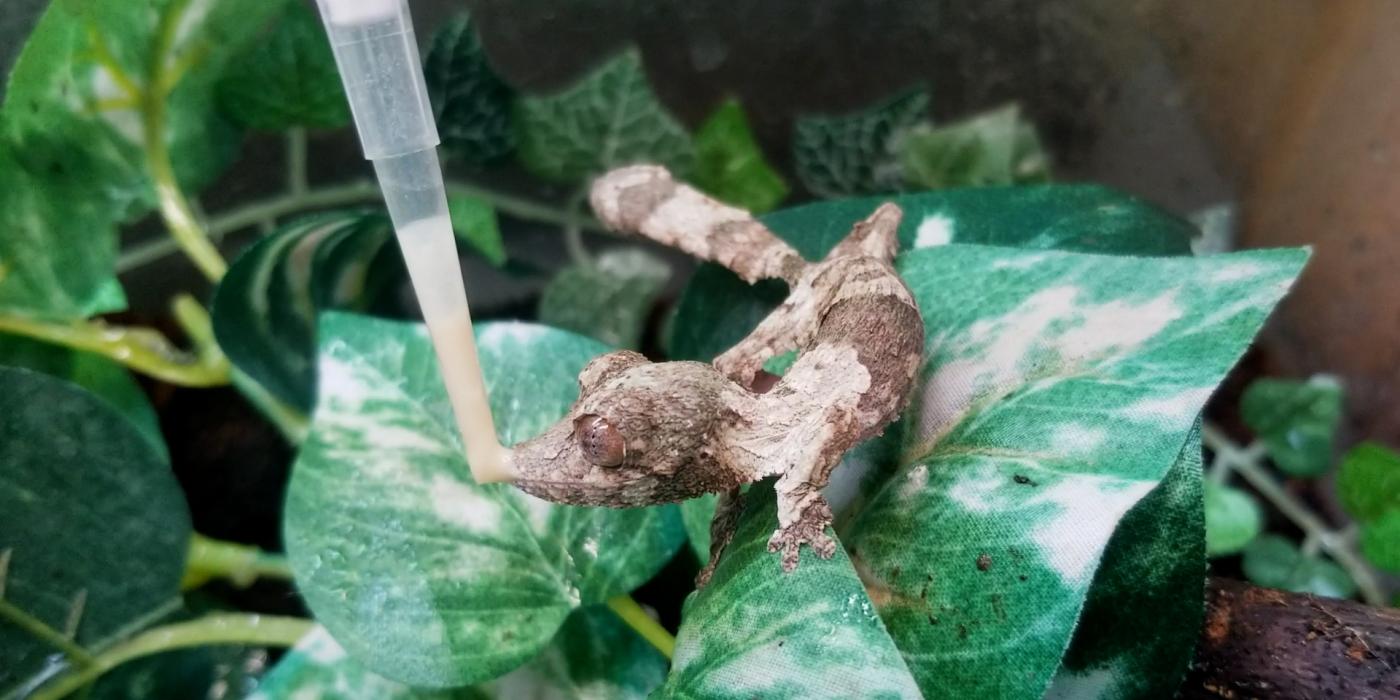Keeping Up With the Kiwi
Last summer, the Smithsonian Conservation Biology Institute in Front Royal, Virginia, experienced a bird baby boom. If you have followed my fellow keeper Erica Royer’s updates, you already know that our team helped raise four Guam kingfishers—a species considered extinct in the wild by the International Union for Conservation of Nature. At the same time, we celebrated the hatching of two male brown kiwi chicks—a boon to the population of this vulnerable species.
Our first chick, a male, hatched June 14, 2020, to 7-year-old mother Ora and 36-year-old father, Maori. Nearly three months later, the pair’s second chick—another male—emerged from his shell Sept. 4. Since both are still quite young, it can be difficult to discern their personalities. Compared with other chicks that we have hand-raised in the past, the first chick is a bit more easy-going than others at this age. However, like all kiwi, he has a tendency to be stubborn and ornery at times. His younger brother shares these characteristics, and is also very disinclined to being held.
One of my favorite aspects of being a kiwi keeper is having the opportunity to hatch and hand-raise chicks. In the wild, when a brown kiwi hatches, it receives no parental care and must find food on its own. Since this species does not imprint on humans, we pull and incubate any eggs laid at our facility before they hatch. That way, we can keep a close eye on the chicks and monitor their health, weight and food intake.
Initially, brown kiwi chicks have a large internal yolk sac that they absorb after hatching. It takes days before they start to eat. At SCBI, we offer them a mixture of meat (beef), produce and pellets ground up into a mash. If the chick does not eat on its own and loses 30% of its initial weight, we will hand-feed the chick several times a day. Generally, young kiwi eat without assistance shortly thereafter. We want to ensure that the chicks recognize the mixture as food and readily eat it before we offer the birds’ preferred food items: earthworms and mealworms. That way, they are receiving a nutritionally-balanced meal and not only consuming their favorite “treats.” The process of introducing them to solid foods can be slow and frustrating at times, but it is always a relief when they accept their first meal.
While we have celebrated these successful hatchings, the credit really goes to Ora and Maori. As a pair, they get along very well. Maori is an amazing father and readily incubates their eggs. Male brown kiwi typically reach sexual maturity around 14 months old. Time will tell whether the brothers will remain at SCBI, or if the Association of Zoos and Aquariums’ Species Survival Plan scientists will recommend they join the breeding program at another facility. For now, we feel very fortunate to have these two chicks in our care and look forward to future contributions we can make to this charismatic species’ survival.
This story appears in the January 2021 issue of National Zoo News. In early 2022, the Smithsonian's National Zoo’s historic 1928 Bird House will transform into a first-of-its-kind attraction that immerses visitors in the annual journeys of western hemisphere birds. Learn more about this exciting project!
Related Species:




